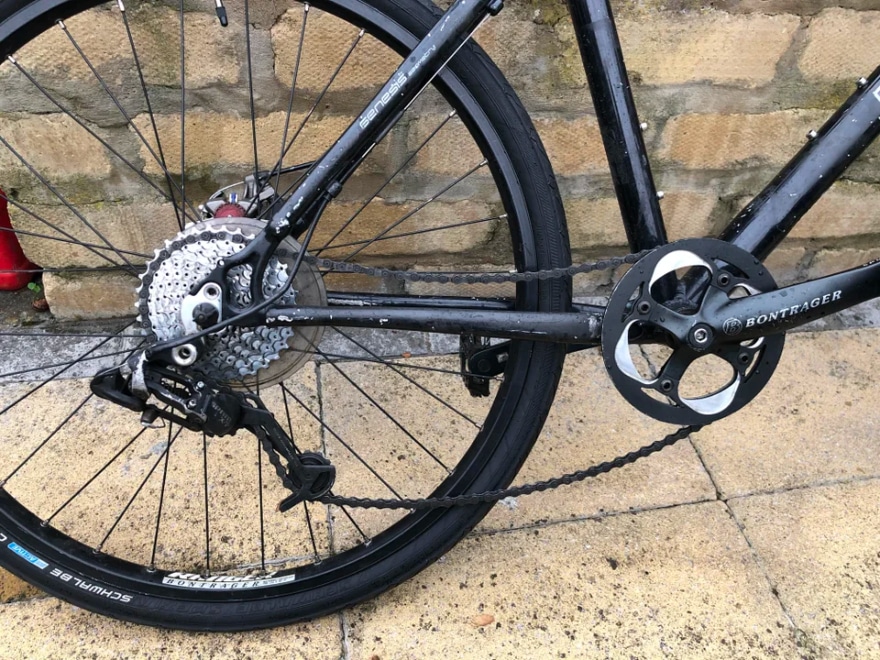Cycling is a popular activity in Australia, offering health benefits and an eco-friendly commuting option. However, like all mechanical systems, bicycles can experience issues, particularly with the drivetrain. One of the most common problems cyclists face is the chain falling off, which can disrupt rides and compromise safety. This article identifies the common causes of chain issues and provides practical solutions to help cyclists maintain a smooth and safe riding experience.
Understanding why the chain keeps falling off is key to preventing these issues. By addressing the root causes—such as loose bolts, a stretched or dirty chain, and misaligned derailleurs—cyclists can ensure their bikes perform efficiently. Proper maintenance and timely repairs are essential to avoid disruptions, making cycling a safer and more enjoyable experience.

1. Loose Screws or Bolts on the Drivetrain
Loose screws or bolts in the drivetrain system can destabilize its alignment, making it easy for the chain to slip off. Tightening these components is a straightforward fix. Focus on both the rear derailleur, which facilitates gear shifting and the front derailleur near the chainring. Using a screwdriver, ensure all screws and bolts are secure to prevent shifting problems during rides.
2. Stretched Chain
Over time, chains elongate due to wear and tear, struggling to stay on the drivetrain’s cassette. If your chain frequently slips during hard pedaling, it might be stretched. Fortunately, tightening an elongated chain is manageable with guides available online. Regularly inspect your chain for signs of wear to address this problem before it escalates.
3. Chain Too Long
A chain that is too long, often due to purchasing the wrong size, exceeds the derailleur’s capacity to handle its length. This results in frequent slipping. If returning the chain for a correctly sized replacement isn’t an option, you can shorten it by removing excess links using a universal chain tool. This ensures better compatibility with your bike’s drivetrain.
4. Dirty Chain
Accumulated grime on a chain not only reduces performance but also increases the likelihood of it falling off. Dirt accelerates wear on the drivetrain, stiffens the links, and impacts overall flexibility. Regularly clean and lubricate your chain using high-quality bike-specific lubricants. This simple maintenance step ensures smoother and safer rides.
5. Stiff Chain Link
Improper installation, aggressive gear shifting, or rust can create stiff chain links that fail to wrap around the cassette correctly. To fix this, apply lubricant to the chain and manually loosen the stiff link. If necessary, use a chain tool for precise adjustments. Persistent stiffness might require replacing the chain or consulting a professional mechanic.
6. Worn Cassette Cogs or Teeth
The cassette teeth grip the chain, enabling efficient drivetrain operation. Excessive use or neglect can wear down these teeth, making it easier for the chain to slip off. Worn cogs also pose safety risks. A professional mechanic can assess the damage and recommend replacements if necessary, restoring your drivetrain’s performance.

7. Misaligned Derailleurs
Derailleurs control gear shifting, but misalignment disrupts this process, leading to skipped gears or chain slips. Realigning the derailleurs is essential for smooth transitions between gears. Online tutorials provide detailed guidance on adjusting both front and rear derailleurs. If unsure, seek professional assistance to prevent long-term damage.
8. Low-Quality Shifters
Budget shifters can fail to maintain cable tension, causing the chain to fall off. You can test this by observing tension loss in the shifter cable during operation. Upgrading to higher-quality shifters often resolves the issue. Professional advice can help determine whether replacement is necessary or if adjustments suffice.
9. Large Bumps
Hitting large bumps can dislodge a loosely fitted chain. This indicates the need to tighten the chain for better stability. A thorough guide on chain tightening techniques can help you address this issue, ensuring your bike performs reliably even on uneven terrain.
A falling bike chain can be a frustrating and dangerous problem, but it’s often preventable with regular maintenance and timely fixes. By addressing loose screws, stretched chains, misaligned derailleurs, and other common issues, you can ensure safer and smoother rides. Keep your bike in top shape to enjoy the full benefits of cycling, whether for recreation or commuting.

